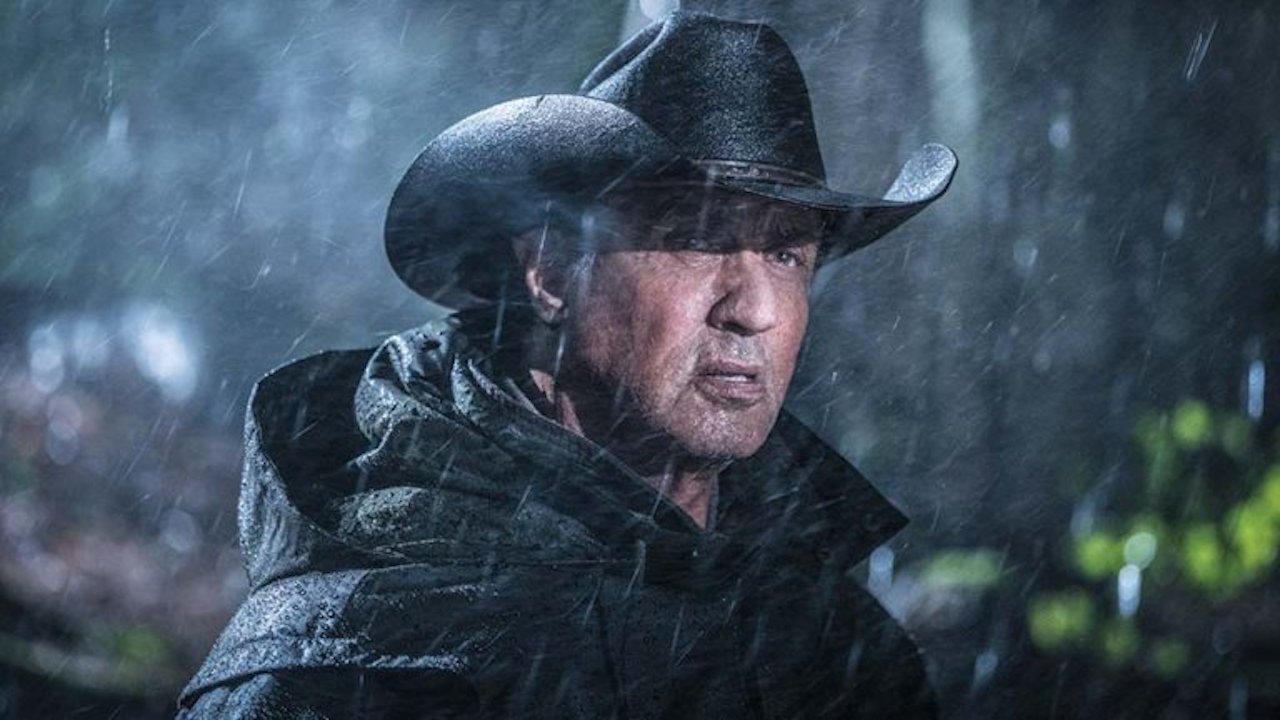Considering Sylvester Stallone’s batting average when it comes to making good movies, I have a hard time grasping why I’ve felt compelled to watch so many of them throughout the years. I suppose the answer lies in the ton of goodwill he earned with “Rocky” early on his career. What is most remarkable is that he has managed to keep that goodwill for the last 40 years or so. Stallone’s second most renowned series is surely the Rambo films, and even though they may not be outstanding in the strict sense of the word, I’ve always found them extremely watchable. Making a decent Rambo movie shouldn’t be rocket science, and that’s why I found this latest entry so disappointing.
“Rambo: Last Blood” deals with ex-Vietnam Marine John Rambo living his golden years in his father’s old ranch where he seems to spend most of his time tracking lost hikers, preforming flashy riding tricks and living off of God knows what. There he has helped raise his house-keeper’s granddaughter Gabrielle (Yvette Monreal), who yearns to re-acquaintance herself with her Mexican no-good father. Once a friend locates him on the other side of the border, she decides to give him a visit against everyone’s advice. Naturally, it takes her no more than just a few hours to get herself kidnapped by a group of drug dealers who do some human trafficking in their spare time. Rambo is reluctantly forced back into action, yet again.
“Rambo: Last Blood” is a very odd movie, and tries to set up a tone that just doesn’t belong in an action-adventure franchise. Halfway through it I found myself thinking I was watching a simple “Taken” rip-off with practically no killings (a “Rambo” franchise record for sure), but then director Adrian Grunberg decides to let things take a very dark turn. Instead of simply allowing Rambo to save his beloved Gabrielle in the nick of time as anyone would have expected, he allows for her to suffer the worst of fates and then Grunberg’s film morphs into “The Texas Chain Saw Massacre,” with Rambo going all out for vengeance (and that’s putting it mildly). There are instances of violence in “Last Blood” that are so extreme, and the editing is so fast, they are even hard to put into words (think of the man whose face is torn apart in a zigzag pattern by some kind of metal contraption). It is also hard to figure out how anybody would enjoy watching John Rambo transforming into a Temple of Doom priest of sorts and ripping off the beating heart from one of his enemies. The audience at the theater where I watched it clearly didn’t know how to react. Some laughed, some remained aghast, I guess I did a bit of both. I remember that when “Rambo Part III” came out it made the Guinness Book of World Records as the most violent movie ever made based on its average one death per minute. When comparing the 1980s entries to this latest one, the old Rambo treated his Russian enemies with kindness and compassion.
“Rambo: Last Blood” also does a terrible job dealing with the world of drug / human trafficking, and with Mexico in general. While the second entry of the series had our country doubling for Vietnam, Spain now doubles for Mexico. The problem is that the Canary Islands don’t resemble Mexico all that much. My guess is that the filmmakers (well aware of their script) simply went out of their way to avoid their southern neighbors. Personally, I don’t think they had anything to worry about. People here would have surely been delighted to play a part in a Rambo movie, including one where even the nicer characters follow the cult of the “Holy Death.” It was a strange experience watching a film where I constantly dreaded thinking of the characters traveling to the south side of the border where incidentally, I was watching it myself. It was also impossible not to laugh at this group of Spanish actors trying to sound Mexican by cursing with every other word in this strange accent. Moreover, like every film south of the border, there was also the requisite scene where the locals despicably refer to the hero as a “gringo.” This could have been believable if he hadn’t been 50 yards away and if he didn’t have Stallone’s looks, as I doubt he would have ever called anyone’s attention as an American here. If this movie wasn’t so dumb, I would have probably found all of this offensive.
Rambo films have never been known for their realism and logic but the other absurdities in “Rambo: Last Blood” are just mind boggling. Deep scars heal in a matter of minutes. The villain whose heart has been ripped from his chest won’t stop screaming afterwards. John Rambo proudly shows off the mile-long tunnels he’s built, and even though they come in very handy when the bad guys pay a visit, it’s impossible to imagine a logical reason to why they would ever be built in the first place. Then there’s a sequence where Rambo finds himself with a character on the brink of death and instead of taking her to the nearest hospital, he decides to drive her home. Naturally, in the following scene we get to see the old cinematic cliché of a freshly covered grave alongside a great, old tree (think Jenny Gump in “Forrest Gump”, William Munny’s wife in “Unforgiven” and Rooster Cogburn in the later “True Grit”). Watching this I couldn’t help but wonder if Rambo bothered calling a funeral home or if he simply buried her with his bare hands, like he did with his Vietnamese love in “Rambo: First Blood Part II.”
Even with all these complaints, I would have no problem if Stallone ever decides to follow-up this movie with a “Rambo 6,” “Rambo: Last Blood Part II” or whatever he wants to call it, but there are certain matters that he needs to take under consideration:
– Even when dealing with tragic subjects like the Russian invasion of Afghanistan and the torture of American POWs, the early Rambo films always avoided becoming depressing, but the fourth and fifth entries clearly did not. Rambo may have killed hundreds or enemies and denied the future birth of scores of Soviets, but down deep he’s a sympathetic and misunderstood figure, not the grim reaper. This latest incarnation of the ex-Marine is so focused on revenge, he doesn’t even bother setting free the other dozen or so girls enslaved by the drug dealers.
– John Rambo can kill countless enemies but certain nuances in extreme cinematic violence are crucial for a film to work. In other words, we don’t have to see his knife penetrating a body again and again. Watching a mimetized Rambo coming out of a muddy hill to finish off an evil opponent in “Rambo: First Blood Part II” was fun; watching him drop an enemy’s head in the middle of the road followed by the sight of his decapitated body was not.
– The last two Rambo movies lacked one of the most important ingredients from the earlier ones: the presence of John Rambo’s superior commander (played by Richard Crenna). He was crucial in selling Rambo’s almost mythic powers to the audience and creating a genuine scene of anticipation before he sprang into action (“God would show mercy, he won’t”). The late Crenna played the character wonderfully but that doesn’t mean there aren’t other current actors who couldn’t do it just as well.
– I know this is a small quibble but for Stallone to play the part effectively, he has to sport that longish ’80s hairdo or it just doesn’t feel like we are watching a Rambo movie.
This latest Rambo entry is only worth watching for how much discussion fodder it provides, based on how bizarre it is. When a friend recently recommended a piece on “Rambo III” I couldn’t help but comment how unremarkable it is and how much I’ve hated it every single time of the dozens that I’ve watched it. They are just those kinds of movies. At any rate, I will continue reprimanding myself for having watched yet another terrible Stallone feature. Until the next one comes along, of course.












